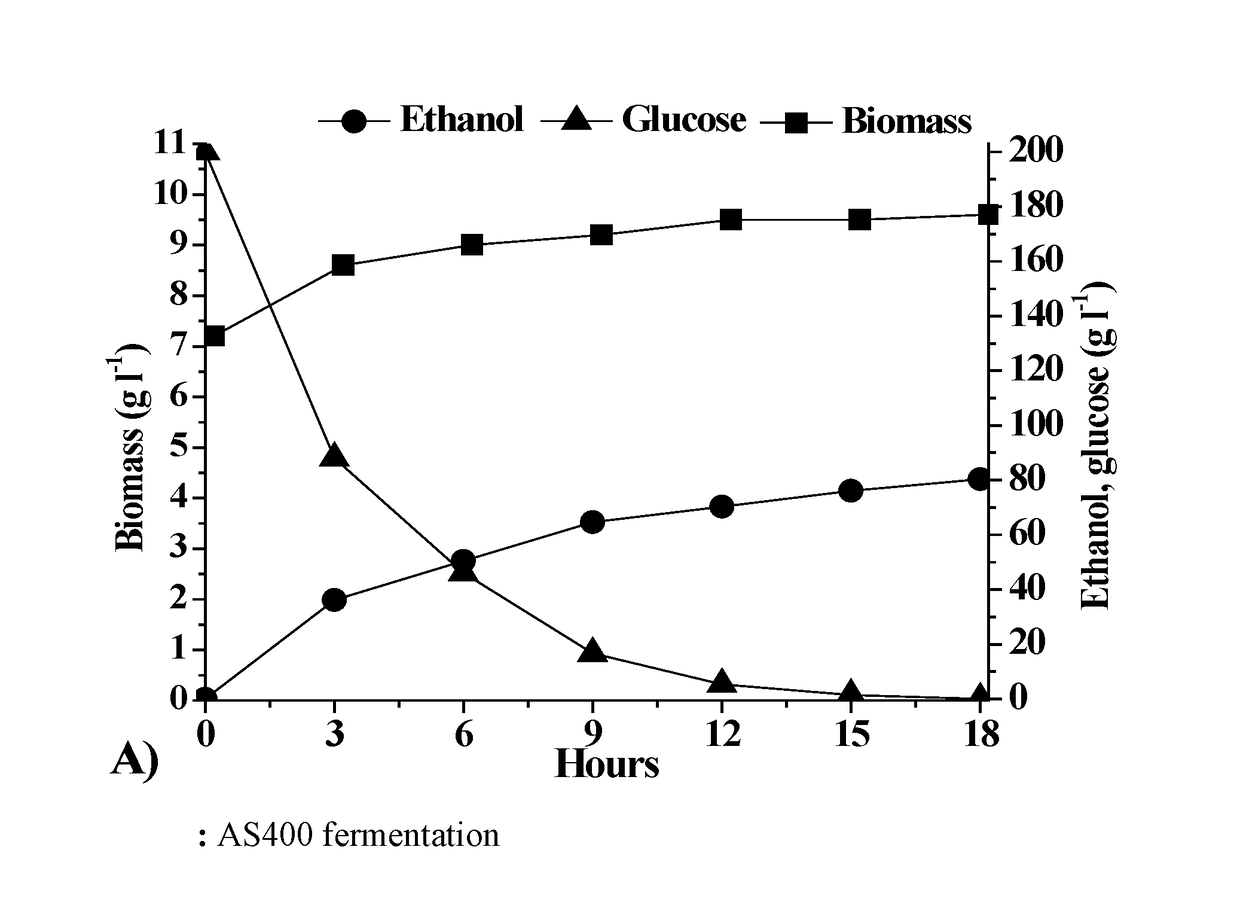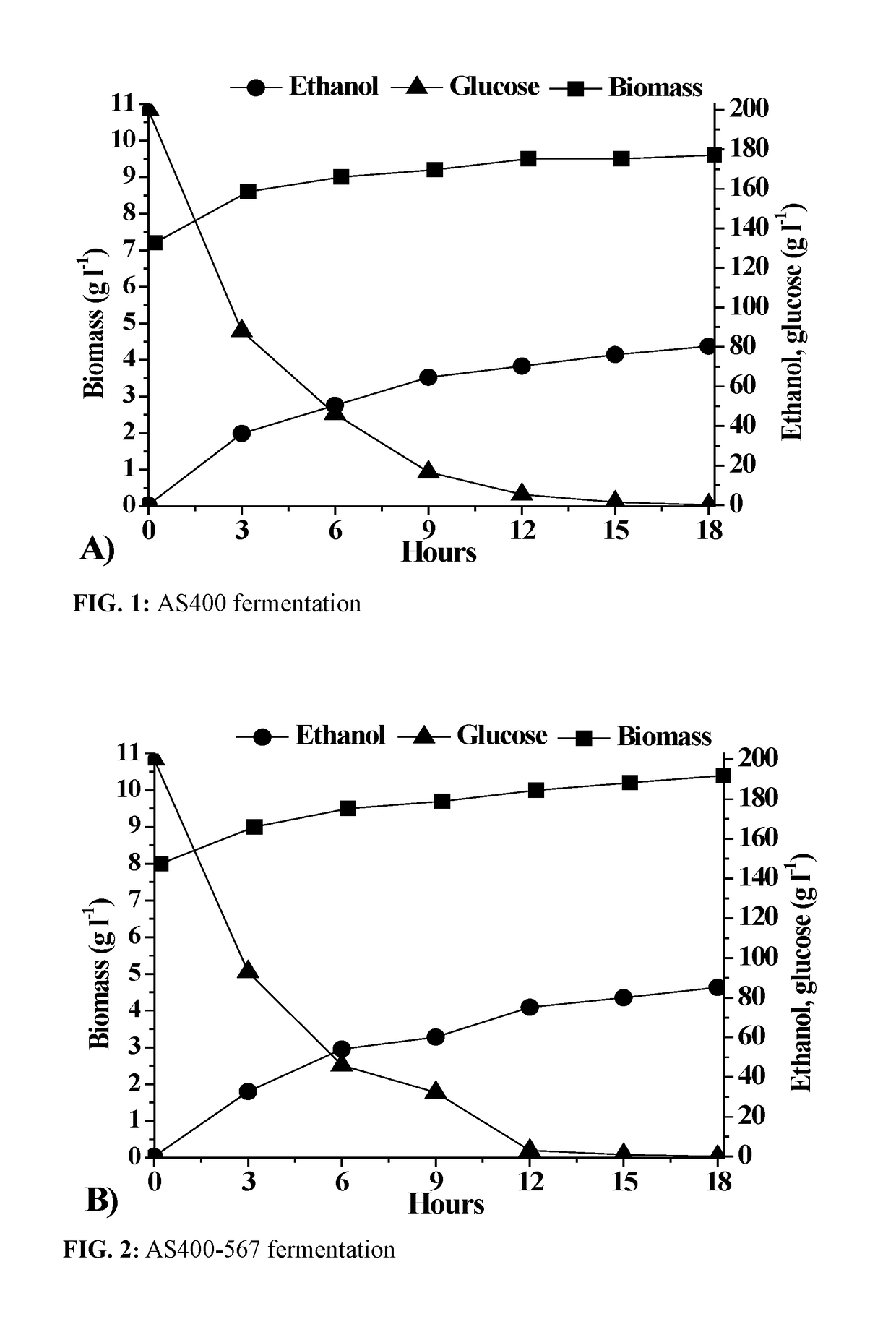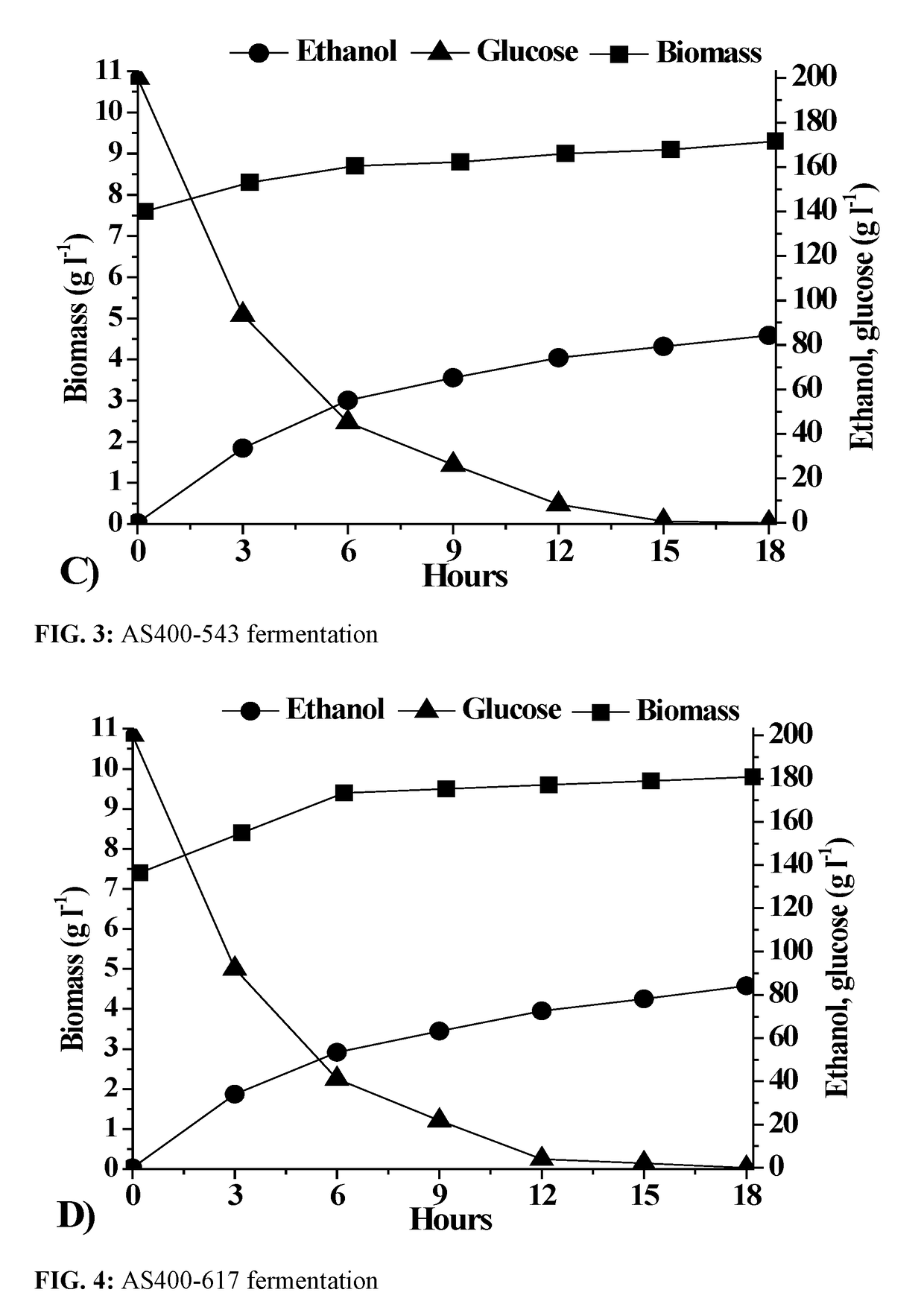Methods for the positive selection of ethanol overproducing mutants from saccharomyces cerevisiae
a technology of saccharomyces cerevisiae and mutants, which is applied in the field of positive selection of ethanol overproducing mutants from saccharomyces cerevisiae, can solve the problems that the use of genetically modified strains for ethanol production, mainly in wine yeast, is not accepted in many parts of the world, and achieves the effects of increasing ethanol production, enhancing ethanol production characteristics, and increasing ethanol productivity
- Summary
- Abstract
- Description
- Claims
- Application Information
AI Technical Summary
Benefits of technology
Problems solved by technology
Method used
Image
Examples
Embodiment Construction
[0022]The S. cerevisiae strain AS400 (Archer Daniels Midland Company (Decatur, Ill., USA)) was used as the parental strain for the selection of improved strains. All chemicals used through the work were obtained from Sigma, USA, unless otherwise noted.
[0023]S. cerevisiae strains were routinely cultured at 30° C. Yeast strains were maintained in rich YPD (1% yeast extract, 1% peptone and 2% glucose) or mineral YNB (0.67%, yeast nitrogen base without amino acids, (Difco, USA), 0.5% ammonium sulfate, 2% glucose) media. S. cerevisiae cells were grown overnight in YPD and washed twice with H2O. For selection of ethanol overproducing mutants, a cell suspension of AS400 (106, 1.7×106 and 3.3×106 cells per plate d=90 mm) was plated on YNB solid medium with glucose (2%) as the carbon source supplemented with toxic concentrations of the selective agents, oxythiamine (118 mM), trehalose (1.31 M), 3-bromopyruvate (2.75 mM), glyoxylic acid (4 mM) or glucosamine (2.75 mM) and incubated for 7-14 d...
PUM
| Property | Measurement | Unit |
|---|---|---|
| Fraction | aaaaa | aaaaa |
| Strain point | aaaaa | aaaaa |
Abstract
Description
Claims
Application Information
 Login to View More
Login to View More - R&D
- Intellectual Property
- Life Sciences
- Materials
- Tech Scout
- Unparalleled Data Quality
- Higher Quality Content
- 60% Fewer Hallucinations
Browse by: Latest US Patents, China's latest patents, Technical Efficacy Thesaurus, Application Domain, Technology Topic, Popular Technical Reports.
© 2025 PatSnap. All rights reserved.Legal|Privacy policy|Modern Slavery Act Transparency Statement|Sitemap|About US| Contact US: help@patsnap.com



